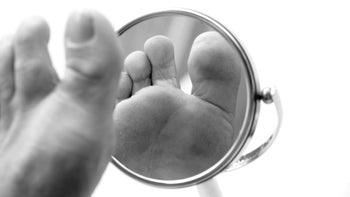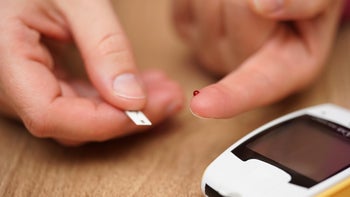
10 Best Exercises for Diabetes
Key takeaways:
Physical activity can help you manage your Type 2 diabetes or reduce your risk of developing it.
An exercise routine that includes aerobics and strength training may improve blood sugar levels and overall health in people with Type 2 diabetes.
Your fitness program will vary based on your current health and goals. So, it’s helpful to check with your healthcare team before starting a new program.
More than 37 million Americans are living with diabetes. About 90% to 95% of them have Type 2 diabetes. This type of diabetes occurs when your cells can’t process sugar for energy or storage.
Luckily, there are things you can do to manage or reduce your risk of Type 2 diabetes. Staying active and making other lifestyle changes can help. Read on to find out why physical activity and planned exercise is so important for people with Type 2 diabetes.
How does exercise help you manage Type 2 diabetes?
When you have Type 2 diabetes, your cells don’t respond normally to insulin (insulin resistance), and your pancreas needs to make more insulin to compensate. This makes your blood sugar rise, which can lead to Type 2 diabetes.
Physical activity can help you manage the effects of Type 2 diabetes. For example, regular exercise can:
Lowers blood sugar levels: An exercise routine may lower blood sugar levels over time.
Help cells respond to insulin better: Exercise improves insulin sensitivity, allowing cells to use the hormone more effectively.
Contribute to finding a comfortable weight: Moderate-intensity exercise can help you find a comfortable weight, which may prevent or reverse Type 2 diabetes.
Reduce the risk of cardiovascular disease: Type 2 diabetes can increase your risk of cardiovascular diseases such as heart attacks and strokes. Luckily, combined exercise training can lower these cardiovascular risk factors.
Maintain muscle strength: Diabetes is a risk factor for low muscle mass and strength. Regular physical activity can help you maintain muscle strength.
How often should you exercise if you have Type 2 diabetes?
General guidelines recommend that people with Type 2 diabetes do aerobics and strength training exercises every week. Both strength training and aerobics can help you manage your blood sugar. But a combination of the two may be even more effective.
According to the general guidelines, you should aim for 150 minutes of aerobics and 2 to 3 strength training sessions every week. The American Diabetes Association (ADA) suggests daily exercise to meet these goals. But if that doesn’t work with your schedule, they recommend not skipping your workout more than 2 days in a row.
These recommendations aren’t appropriate for everyone with Type 2 diabetes. For example, weight lifting or high-intensity aerobics may not be safe if you have certain medical conditions in addition to diabetes. So it’s best to consult with a healthcare professional before starting any regimen.
10 exercises to help you manage Type 2 diabetes
A well-rounded exercise routine should include a variety of activities. These workouts can help you improve and maintain your fitness, strength, and flexibility.
Nervous about starting a new exercise routine? Our experts offer 11 tips for safer exercise if you’re living with diabetes.
Exercise can benefit both your physical and mental health. Take a look at 10 benefits of exercise that go beyond physical well-being.
Not sure what type of exercise is best for you? Our movement and exercise guide is a great place to get started.
Below are 10 ideas to help you get started.
1. Walking
Walking is a low-impact activity that many people enjoy. Getting your steps in can improve your blood pressure, glucose, and cholesterol levels. And 30 minutes of brisk walking –– or about 100 steps a minute –– is a great way to meet the ADA’s recommendation for daily aerobic exercise.
You can also boost the intensity of your walks by adding activities like stair climbing. But if you weren’t active before your diabetes diagnosis, consider starting slowly and gradually upping your pace.
2. Running
With proper training –– and your healthcare team’s approval –– you can work your way up from brisk walking to running. This faster-paced activity has been linked to a reduced risk of high blood pressure, high blood sugar, and high cholesterol.
3. Cycling
There’s a reason stationary bikes have become so popular. Regular bicycling can improve everything from your heart and lung health to your balance and posture. But you don’t need an expensive fitness bike to get started. You can grab an old bike and hit the outdoors or try a stationary bike at your local gym. Research shows that cycling can improve health outcomes for people who have diabetes.
4. Dancing
Adding dance to your routine can make your workouts more fun. Dancing is a heart-healthy activity that can also improve your fitness and blood sugar levels. One study found that people with Type 2 diabetes who participated in a dance program were more motivated to stick to a routine than those who did a different fitness program.
5. Water aerobics
There are plenty of reasons to take your workout to the pool. Water exercises like swimming are easy on your joints and may reduce blood sugar levels. They may also boost overall fitness, strength, and heart health in people with Type 2 diabetes.
6. High-intensity interval training
With high-intensity interval training (HIIT), you switch between short bouts of high-intensity activities and longer bouts of lower-intensity moves. You can add this to various exercises like running and cycling. If you have Type 2 diabetes, HIIT may decrease your fasting blood sugar.
7. Weight training
This form of strength training uses weights or other equipment to build or maintain muscle mass and strength. It may increase insulin sensitivity and glucose tolerance in people with Type 2 diabetes.
8. Yoga
Yoga involves low-impact movement, meditation, and breathing. It can improve balance, flexibility, and strength. This is especially helpful for older people with Type 2 diabetes who might be at greater risk of falling. The practice may also help you manage your blood sugar and cholesterol levels.
9. Tai chi
Tai chi also combines low-impact moves, meditation, and breathing techniques. This ancient practice promotes better balance, range of motion, and overall well-being. Adding it to your fitness routine may lower your blood sugar.
10. Pilates
Another low-impact form of exercise, Pilates earns a spot on this list for good reason. It uses repetitive movements and breath control to strengthen your core and improve your balance and posture. A study showed that practicing Pilates helped participants with Type 2 diabetes control their blood glucose.
Does exercising more affect my prescription dosages?
Medications for Type 2 diabetes work in different ways. Some help increase insulin, while others lower glucose absorption. But all of them aim to control your blood sugar.
Physical activity affects your blood sugar too. For example, exercise can lower your blood sugar for more than 24 hours after a workout. So, regular exercise might affect your prescription dosages. If you take insulin, you might need a lower dosage to prevent hypoglycemia, or low blood sugar.
That’s why it’s so important to talk to your diabetes care team before you start exercising. They might recommend checking your blood sugar before and after your workout to understand how different activities affect your body. They can also adjust your prescription dosages accordingly.
Frequently asked questions
No single form of exercise lowers blood sugar fast. Exercise can help you manage your blood sugar over time.
It depends on your blood sugar levels and patterns. In general, people with diabetes should avoid drinks with a lot of added sugar.
Foods high in added sugar and sugary beverages can increase blood sugar levels and make it harder to control glucose levels. These include:
Candy
Cookies
Pastries
Sodas
Juice
Instead, opt for diabetes-friendly snacks and foods.
The bottom line
Regular physical activity can help you manage Type 2 diabetes. According to the ADA, your fitness routine should incorporate multiple kinds of exercise, including aerobics and strength training. Doing a variety of activities you enjoy can help you make exercise a part of your daily life. It’s helpful to check with your healthcare team about safety and best practices before you get started.
Why trust our experts?


References
American Diabetes Association. (n.d.). Blood sugar and exercise.
American Diabetes Association. (n.d.). Understanding insulin resistance.
Canto, D. E., et al (2019). Diabetes as a cardiovascular risk factor: An overview of global trends of macro and micro vascular complications. European Journal of Preventive Cardiology.
Chao, M. et al. (2018). The effects of tai chi on type 2 diabetes mellitus: A meta-analysis. Journal of Diabetes Research.
Chiang, S. L., et al. (2019). Effects of a 12-week moderate-intensity exercise training on blood glucose response in patients with type 2 diabetes: A prospective longitudinal study. Medicine.
Colberg, S. R., et al. (2010). Exercise and type 2 diabetes. Diabetes Care.
Colberg, S. R., et al. (2016). Physical activity/exercise and diabetes: A position statement of American Diabetes Association. Diabetes Care.
Dutta, D., et al. (2021). Effect of yoga on glycemia and lipid parameters in type-2 diabetes: A meta-analysis. Journal of Diabetes and Metabolic Disorders.
Feo, P. D. (2013). Is high-intensity exercise better than moderate intensity exercise for weight loss? Nutrition, Metabolism and Cardiovascular Diseases.
Heiston, E. M., et al. (2020). Exercise improves adiposopathy, insulin sensitivity and metabolic syndrome severity independent of intensity. Experimental Physiology.
Ho, S. S., et al. (2012). The effect of 12 weeks of aerobic, resistance or combination exercise training on cardiovascular risk factors in the overweight and obese in a randomized trial. BMC Public Health.
Honda, H., et al. (2016). Stair climbing/descending exercise for a short time decreases blood glucose levels after a meal in people with type 2 diabetes. BMJ Open Diabetes Research Care.
Huston, P., et al. (2016). Health benefits of tai chi. Canadian Family Physician.
Jellyman, C., et al. (2015). The effects of high-intensity interval training on glucose regulation and insulin resistance: A meta-analysis. Obesity Reviews.
Kloubec, J. (2011). Pilates: How does it work and who needs it? Muscles, Ligaments, Tendons Journal.
Kravitz, L. (2014). High-intensity interval training. American College of Sports Medicine.
Mangeri, F., et al. (2014). A standard ballroom and Latin dance program to improve fitness and adherence to physical activity in individuals with type 2 diabetes and in obesity. Diabetology and Metabolic Syndrome.
Melo, K. C. B., et al. (2020). Pilates method training: Functional and blood glucose responses of older women with type 2 diabetes. Journal of Strength and Conditioning Research.
Moghetti, P., et al. (2020). Walking for subjects with type 2 diabetes: A systematic review and joint AMD/SID/SISMES evidence-based practical guideline. Nutrition, Metabolism and Cardiovascular Diseases.
Morrison, S., et al. (2010). Balance training reduces falls risk in older individuals with type 2 diabetes. Diabetes Care.
National Institute of Neurological Disorders and Stroke. (n.d.). Stroke information.
National Institute on Aging. (2021). Four types of exercise can improve your health and physical ability.
Rees, J. L., et al. (2017). Aquatic exercise for adults with type 2 diabetes: A meta-analysis. Acta Diabetologica.
Ried-Larsen, M., et al. (2021). Association of cycling with all-cause and cardiovascular disease mortality among persons with diabetes. JAMA Internal Medicine.
Scheer, A. S., et al. (2020). The effects of water-based exercise training in people with type 2 diabetes. Medicine and Science in Sports and Exercise.
Shahar, J., et al. (2015). Medication and exercise interactions: Considering and managing hypoglycemia risk. Diabetes Spectrum.
Sigal, R. J., et al. (2007). Effects of aerobic training, resistance training or both on glycemic control in type 2 diabetes: A randomized controlled trial. Annals of Internal Medicine.
State Government of Victoria, Australia. (2013). Cycling-health benefits.
Strasser, B., et al. (2013). Resistance training for diabetes prevention and therapy: Experimental findings and molecular mechanisms. Biomedical Research International.
Tudor-Locke, C., et al. (2018). How fast is fast enough? Walking cadence (steps/min) as a practical estimate of intensity in adults: A narrative review. British Journal of Sports Medicine.
Wein, H. (2020). Maintain your muscle: Strength training at any age. National Institutes of Health.
Williams, P. T. (2010). Relationship of running intensity to hypertension, hypercholesterolemia, and diabetes. Medicine & Science in Sports & Exercise.

























